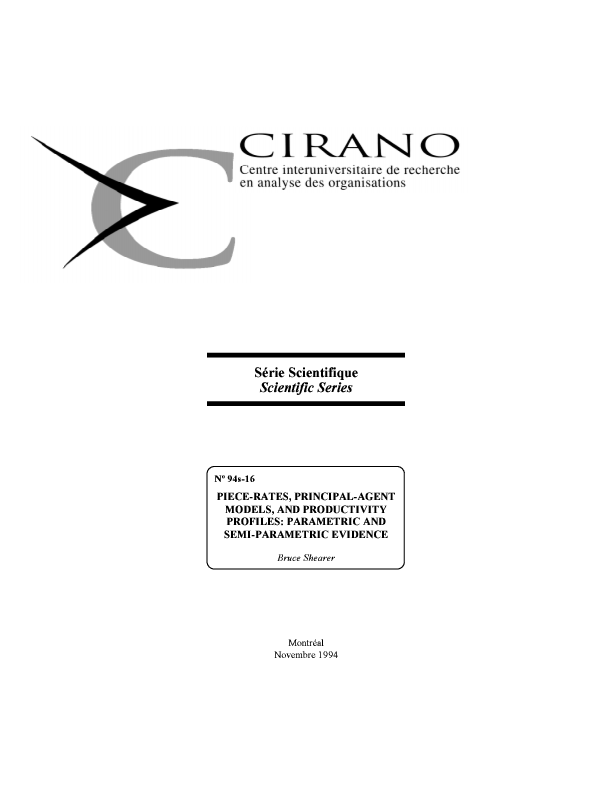Piece-Rates, Principal-Agent, and Productivity Profiles: Parametric and Semi-Parametric Evidence
This paper exploits the natural link between observed wages and productivity that is inherent in piece-rate wage data to estimate worker productivity profiles. Piece-rate wages are functions of the parameters of the compensation system and worker effort. Identifying productivity from such data requires separating out these effects. This can be accomplished by explicitly modelling the principal-agent relationship between the worker and the firm and deriving optimal decision rules for worker effort. This approach is applied to historical payroll data collected from a British Columbia copper mine. The salient aspects of the mine's production process are incorporated into the model, namely, asymmetric information, team production and heterogeneous workers. Solving the model for equilibrium worker effort implies a censored wage distribution which is estimated both parametrically and semi-parametrically. Methods to control for unobserved heterogeneity among workers are also used. Productivity profiles are then constructed from the resulting parameter estimates. Results suggest that productivity profiles were increasing concave functions of worker tenure.
[ - ]




